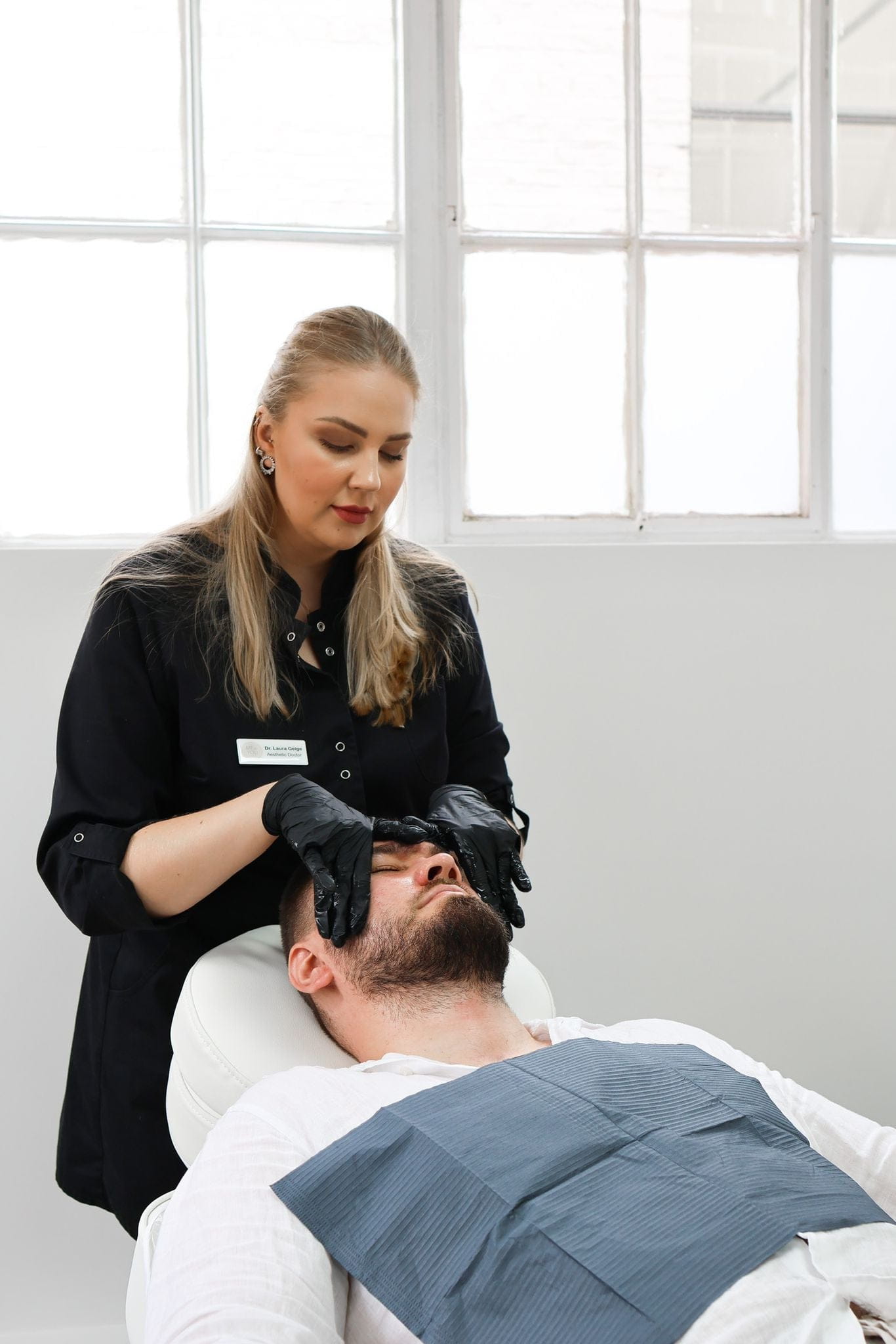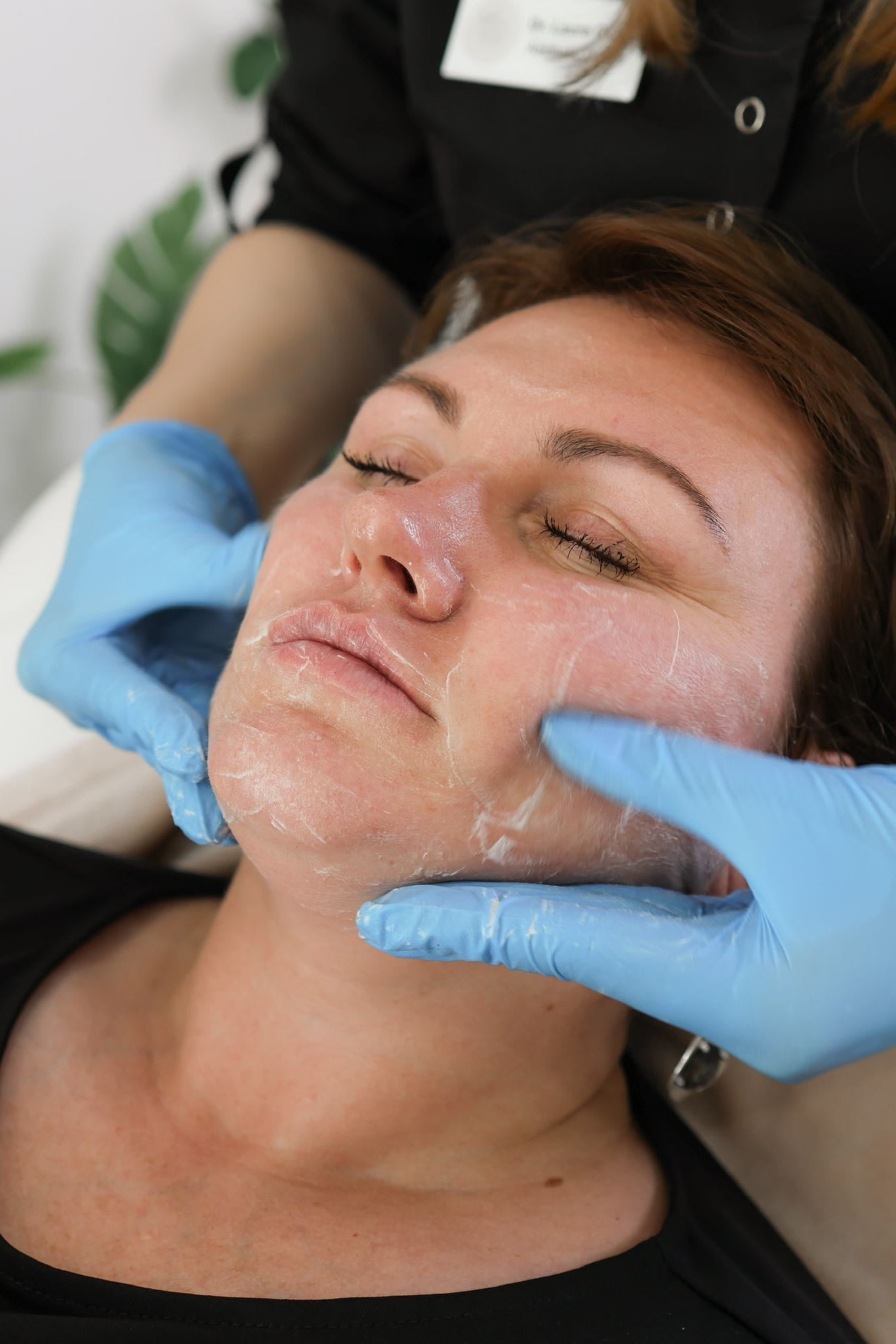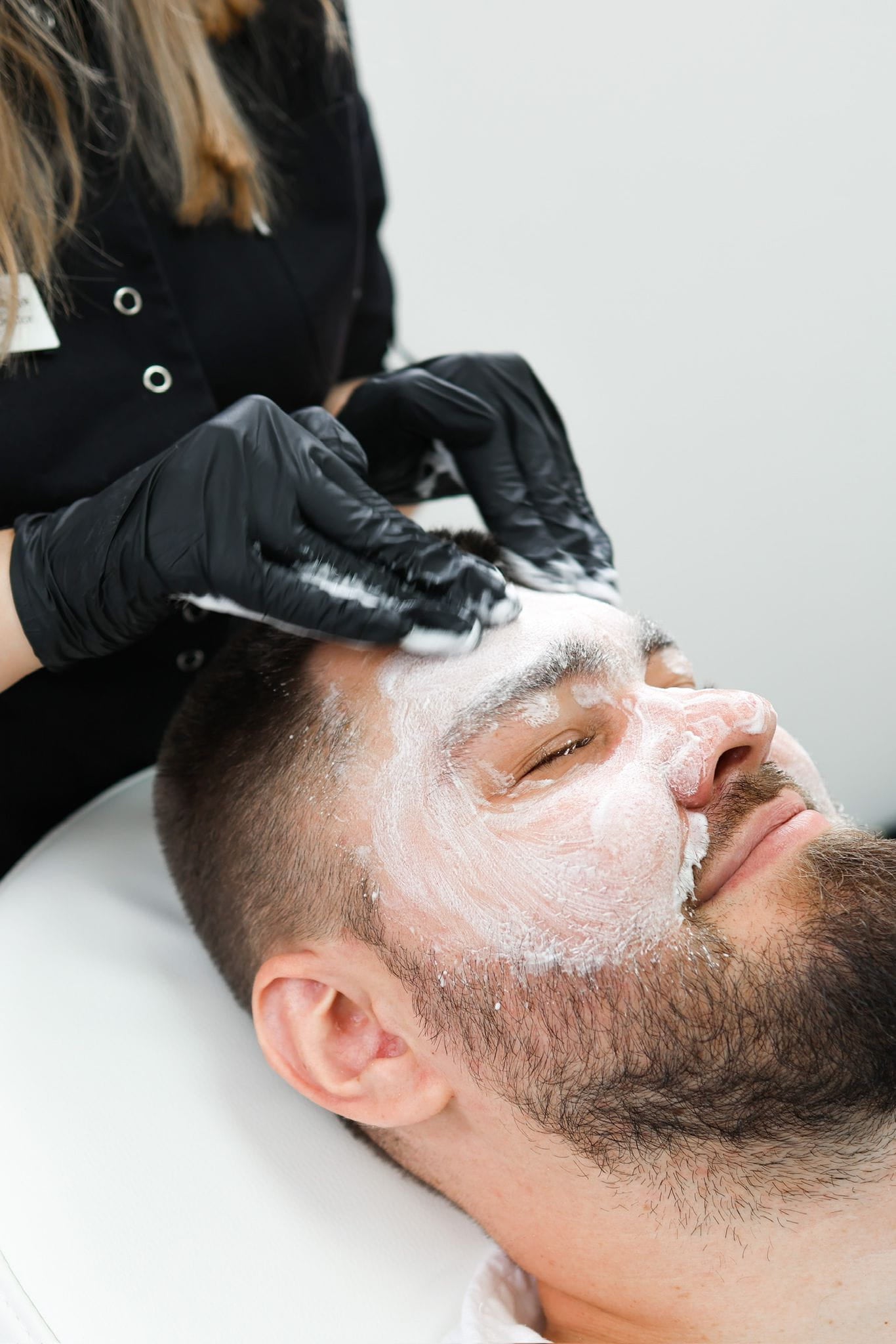Cosmelan Depigmentation Peel Mechanism
The Cosmelan Depigmentation Peel is a treatment designed to address hyperpigmentation, particularly sun-induced spots and melasma. Its efficacy stems from its unique combination of ingredients, which work synergistically to target melanin production and reduce existing pigmentation.
Active Ingredients
Cosmelan’s depigmenting action revolves around inhibiting tyrosinase, the enzyme responsible for melanin synthesis. The peel utilizes a blend of powerful active ingredients, including hydroquinone, kojic acid, and azelaic acid.
Hydroquinone is a potent tyrosinase inhibitor, effectively reducing melanin production at its source. Kojic acid also demonstrates tyrosinase inhibitory properties and possesses antioxidant qualities, protecting the skin from further damage. Azelaic acid complements the other ingredients by exfoliating the skin, promoting cell turnover, and inhibiting inflammation.
Together, these active ingredients work synergistically to lighten existing pigmentation and prevent the formation of new pigment, leading to a more even skin tone.
Procedure and Application
The Cosmelan Depigmentation Peel is applied in a two-stage process. The first stage involves a professional application of a potent depigmenting solution containing hydroquinone, kojic acid, and azelaic acid. This initial treatment works to penetrate deep into the skin layers to inhibit melanin production and exfoliate dead skin cells.
After the initial application, a recovery cream is applied daily for several weeks post-treatment. The recovery cream continues to work by supporting the depigmenting action of the peel and protecting the skin from sun damage. Regular use of sunscreen is essential throughout the entire process to prevent further pigmentation.
The Cosmelan Depigmentation Peel is typically administered in a series of treatments spaced several weeks apart, depending on the severity of hyperpigmentation and individual response. Results are gradual, with noticeable lightening of pigmentation occurring over several weeks to months. Maintenance sessions may be required to maintain even skin tone and prevent recurrence of pigmentation.
Effectiveness for Sun-Induced Pigmentation
Sun-induced pigmentation, commonly known as sun spots or age spots, is a prevalent concern in the UK. Caused by excessive exposure to ultraviolet (UV) radiation, these dark patches can significantly impact self-esteem and confidence.
Clinical Studies and Evidence
Clinical studies and evidence regarding the effectiveness of Cosmelan Depigmentation Peel for sun-induced pigmentation have shown promising results. Studies demonstrate its ability to reduce the appearance of hyperpigmentation, including sun spots, freckles, and melasma. The peel’s combination of tyrosinase inhibitors, exfoliating agents, and antioxidants contributes to its efficacy in lightening existing pigment and preventing new pigment formation.
Research suggests that multiple treatments are required for optimal results, with gradual improvement observed over several weeks to months. Patient satisfaction rates are generally high, with many reporting noticeable reductions in pigmentation and a more even skin tone.
However, it’s important to note that individual responses may vary depending on factors such as skin type, severity of pigmentation, and adherence to post-treatment instructions. As with any medical treatment, consulting with a qualified dermatologist or aesthetic practitioner is essential for personalized assessment and treatment planning.
Real-World Patient Experiences
While clinical studies demonstrate the potential effectiveness of Cosmelan for sun-induced pigmentation, real-world patient experiences can vary. Many individuals report noticeable improvements in the appearance of sun spots and age spots after undergoing a series of Cosmelan treatments. They often describe a gradual lightening of pigmentation, resulting in a more even skin tone.
However, it’s crucial to understand that results are not instant and may take several weeks to months to become fully apparent. Patience is key throughout the treatment process. Some patients may experience temporary side effects such as redness or sensitivity following treatment, but these typically subside within a few days.
The success of Cosmelan largely depends on factors like individual skin type, the severity of pigmentation, and strict adherence to post-treatment instructions, including consistent sunscreen use. It’s important to manage expectations and consult with a qualified practitioner who can assess your specific needs and guide you through the process.
Factors Influencing Effectiveness
The effectiveness of the Cosmelan Depigmentation Peel for sun-induced pigmentation is influenced by several factors. Skin type plays a significant role, as individuals with lighter skin tones tend to respond more favorably to treatment compared to those with darker skin tones.
The severity of pigmentation also impacts the outcome. Mild sun spots may show improvement with fewer treatments, while deeply ingrained pigmentation may require more sessions.
Adherence to post-treatment instructions is crucial for success. Consistent use of sunscreen is essential to prevent further pigmentation and protect the skin from UV damage during the treatment process.
Additionally, factors like age, genetics, and overall health can influence the effectiveness of the peel.
Considerations and Risks
Before embarking on any depigmentation treatment, it’s crucial to carefully consider potential risks and benefits. Cosmelan, while showing promise in addressing sun-induced pigmentation, may not be suitable for everyone. Potential side effects can include skin irritation, redness, dryness, and sensitivity. Individuals with certain skin conditions, allergies, or those taking specific medications might need to avoid the treatment altogether.
Potential Side Effects
Potential side effects associated with Cosmelan Depigmentation Peel can vary among individuals but may include redness, itching, burning, peeling, dryness, and sensitivity. Some people might experience a temporary lightening or darkening of their skin during the treatment process.

It’s crucial to follow pre-and post-treatment instructions carefully, including avoiding sun exposure and using recommended skincare products, to minimize potential side effects and optimize results.
As with any medical procedure, consulting a qualified dermatologist or aesthetic practitioner is essential for a thorough assessment, personalized treatment plan, and management of any potential risks or complications.
Treatment Duration and Maintenance
The duration of treatment with Cosmelan Depigmentation Peel varies depending on the individual’s skin condition, pigmentation severity, and response to treatment.
Generally, a series of treatments spaced several weeks apart is recommended, with gradual improvement observed over weeks to months. Multiple sessions are often necessary for optimal results, as melanin production cycles gradually diminish.
Maintenance sessions may be required to sustain the achieved results and prevent recurrence of pigmentation. The frequency of maintenance sessions can vary based on individual needs and lifestyle factors like sun exposure.
Cosmelan Depigmentation Peel is a potent treatment and requires careful consideration of potential risks and benefits. Individuals should consult with a qualified dermatologist or aesthetic practitioner to determine if it’s suitable for them.

It’s important to understand that the peel may not be effective for all skin types or pigmentation concerns, and individual results can vary.
Cost and Accessibility in the UK
The cost of Cosmelan Depigmentation Peel in the UK can vary considerably depending on factors such as the location of the clinic, the experience of the practitioner, and the number of treatments required. It’s generally considered a more expensive treatment option compared to some other pigmentation remedies.
Accessibility in the UK is generally good, with numerous clinics offering Cosmelan Depigmentation Peel services. However, availability can vary depending on geographical location.

Patients should research different clinics, compare pricing and practitioner qualifications, and ensure they are comfortable with the clinic’s approach to treatment.
Alternatives to Cosmelan Peel
While Cosmelan is a popular option for addressing sun-induced pigmentation, other effective alternatives exist. Chemical peels using various acids like glycolic or salicylic acid can exfoliate the skin and reduce pigment buildup. Microdermabrasion, a procedure involving the mechanical removal of the outermost layer of skin, can also help lighten pigmentation. Laser therapy targets melanin in the skin, breaking it down and reducing its appearance. Other options include topical creams containing ingredients like hydroquinone, kojic acid, or retinoids.
Other Depigmentation Treatments
Alternatives to Cosmelan Depigmentation Peel include chemical peels using acids like glycolic or salicylic acid, which exfoliate the skin and reduce pigment buildup. Microdermabrasion mechanically removes the outermost layer of skin, helping lighten pigmentation. Laser therapy targets melanin in the skin, breaking it down and reducing its appearance.
Other options include topical creams containing ingredients like hydroquinone, kojic acid, or retinoids. The choice of treatment depends on individual skin type, severity of pigmentation, and personal preferences.
Home Remedies for Sun Spots
Home remedies can be helpful in managing sun spots and promoting an even skin tone. While they may not be as potent as professional treatments like Cosmelan, consistent use can contribute to visible improvement over time.
One popular home remedy is applying a paste made from lemon juice and turmeric. Lemon juice contains citric acid, a natural exfoliant, while turmeric has antioxidant properties that may help brighten skin. Apply the paste to sun spots and leave it on for 15-20 minutes before rinsing with lukewarm water.
Another option is using aloe vera gel. Aloe vera possesses soothing and anti-inflammatory properties that can help calm irritated skin and reduce redness associated with sun damage. Simply apply fresh aloe vera gel directly to sun spots and leave it on for several hours or overnight.
It’s important to remember that home remedies may take longer to show noticeable results compared to professional treatments.
Consistency is key, and incorporating these remedies into a regular skincare routine alongside sun protection can contribute to gradual improvement in the appearance of sun spots.
Achieve radiant skin with Cosmelan Depigmentation Peel at It’s Me & You Clinic with Dr. Laura Geige.
- Launch Pad Sex Position - October 3, 2025
- Kratom Gummies And Their Role In Chronic Pain Management - October 2, 2025
- How To Make Lip Filler Dissolve Faster - October 2, 2025
